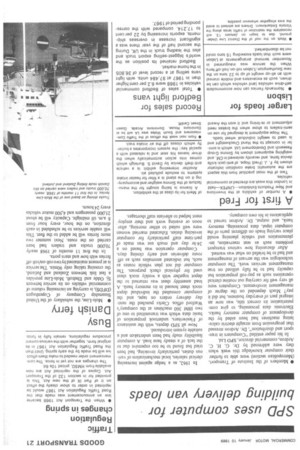SPD uses computer for building delivery van loads
Page 23

If you've noticed an error in this article please click here to report it so we can fix it.
• Members of the Institute of Transport. (Metropolitan section) were able to further their computer knowledge this week when they were addressed by Dr. G. H. C. Ardron, commercial director, SPD Ltd.
In his paper entitled "Computers in transport and distribution", Dr. Ardron stressed that progression from straight electric calculating machines had been aided by the development of computer memory banks. Electronic data processing, to give computerization its correct title, was now an integral part of everyday business, but did it pay? Much depended on the degree of management involvement. Computers were all very welt for carrying out routine clerical operations such as pay-roll preparation but capacity had to be fully utilized on true management services work. The computer technologist was the servant of management and had to be briefed on what was wanted.
After discussing how various transport problems such as seat reservation, implementation and vehicle planning would place varying loads on different parts of the computer input, data processing, memory bank, and output, Dr. Ardron turned to applications in his own company. In 1962, as a hedge against increasing clerical salaries, local mechanization of various duties, particularly invoicing, had been tried but found to be too expensive due to the lack of a steady base load. A computer feasibility study had been undertaken and a suitable system introduced.
Now all SPD depots, with the assistance of Flexiwriters, undertook preparation of basic data which was transmitted to one of two IBM 360 machines at the company's Watford office. Clerks punched the nextday delivery orders on tape, and the computer consulted the individual depot stock sheet housed in its memory bank. A load assembly sheet was returned to the depot together with a weekly stock sheet used for physical check purposes. The computer did not plan vehicle routes as such, but indicated anomalies such as offroute deliveries and early closing days.
Computer operation was based on a 24-hr day and much use was made of part-time staff particularly for computer invoicing duties. Educated married women were well suited to either morning, afternoon or evening work and their employ: ment helped to alleviate staff shortages.








































































































